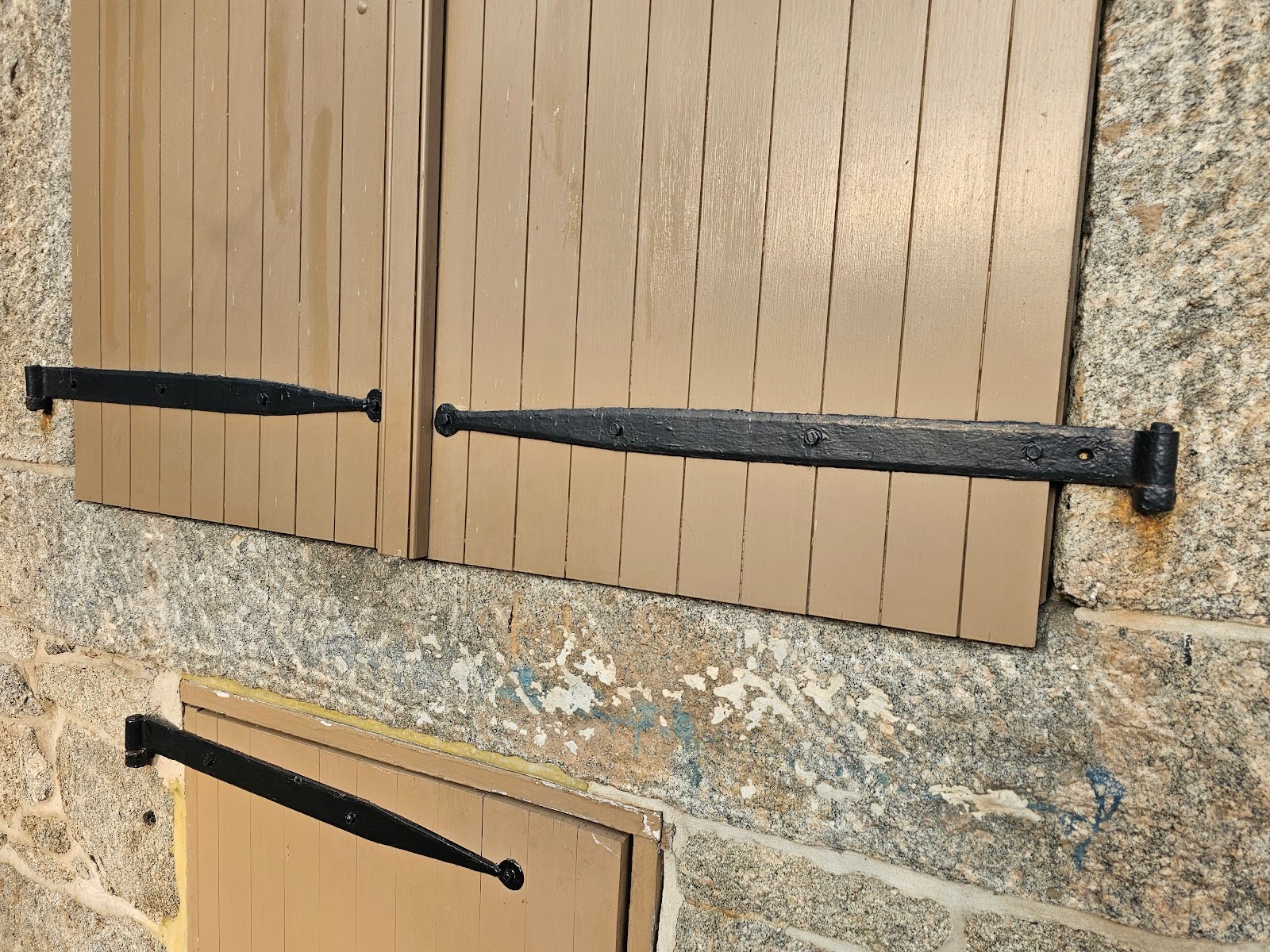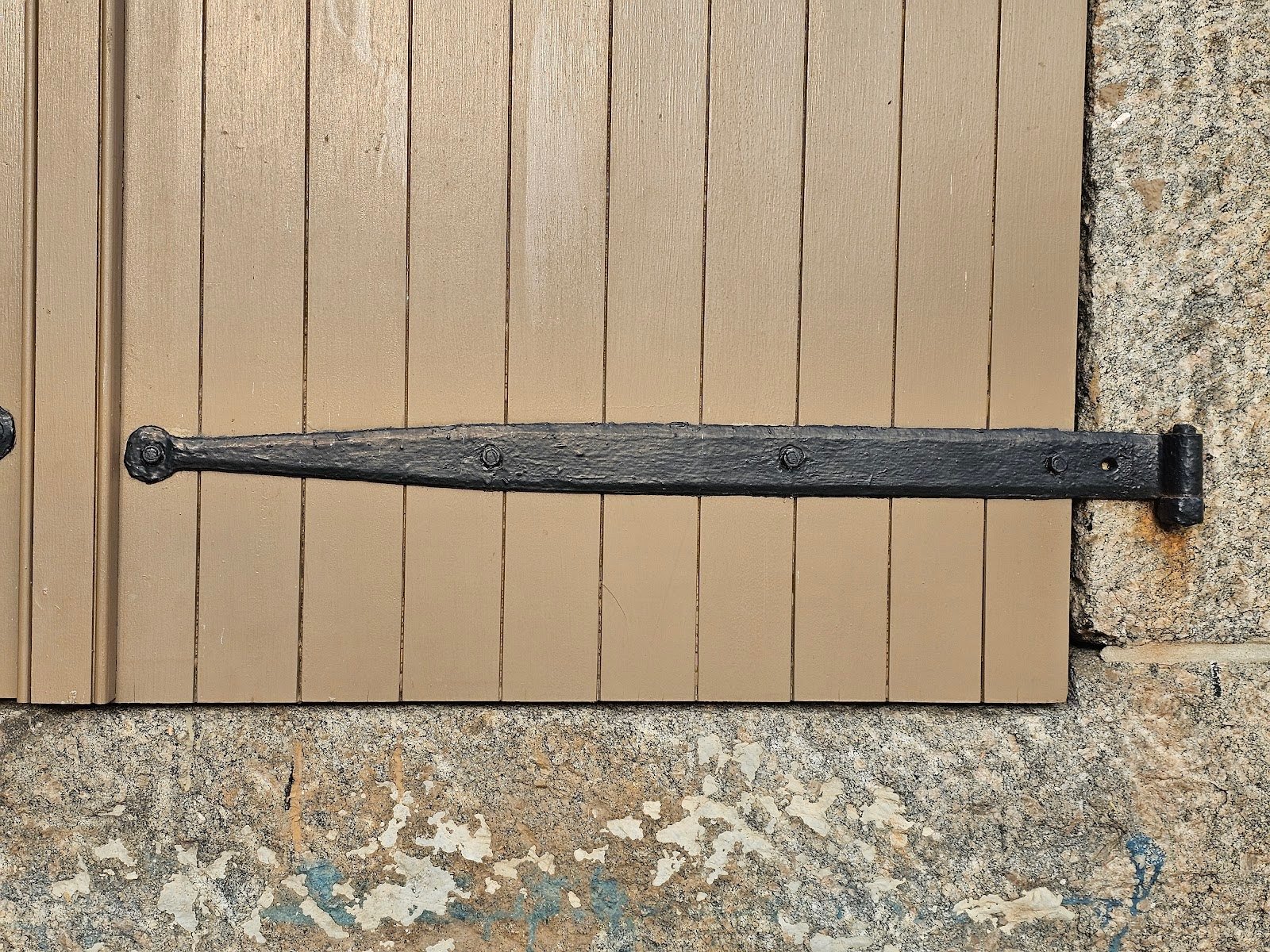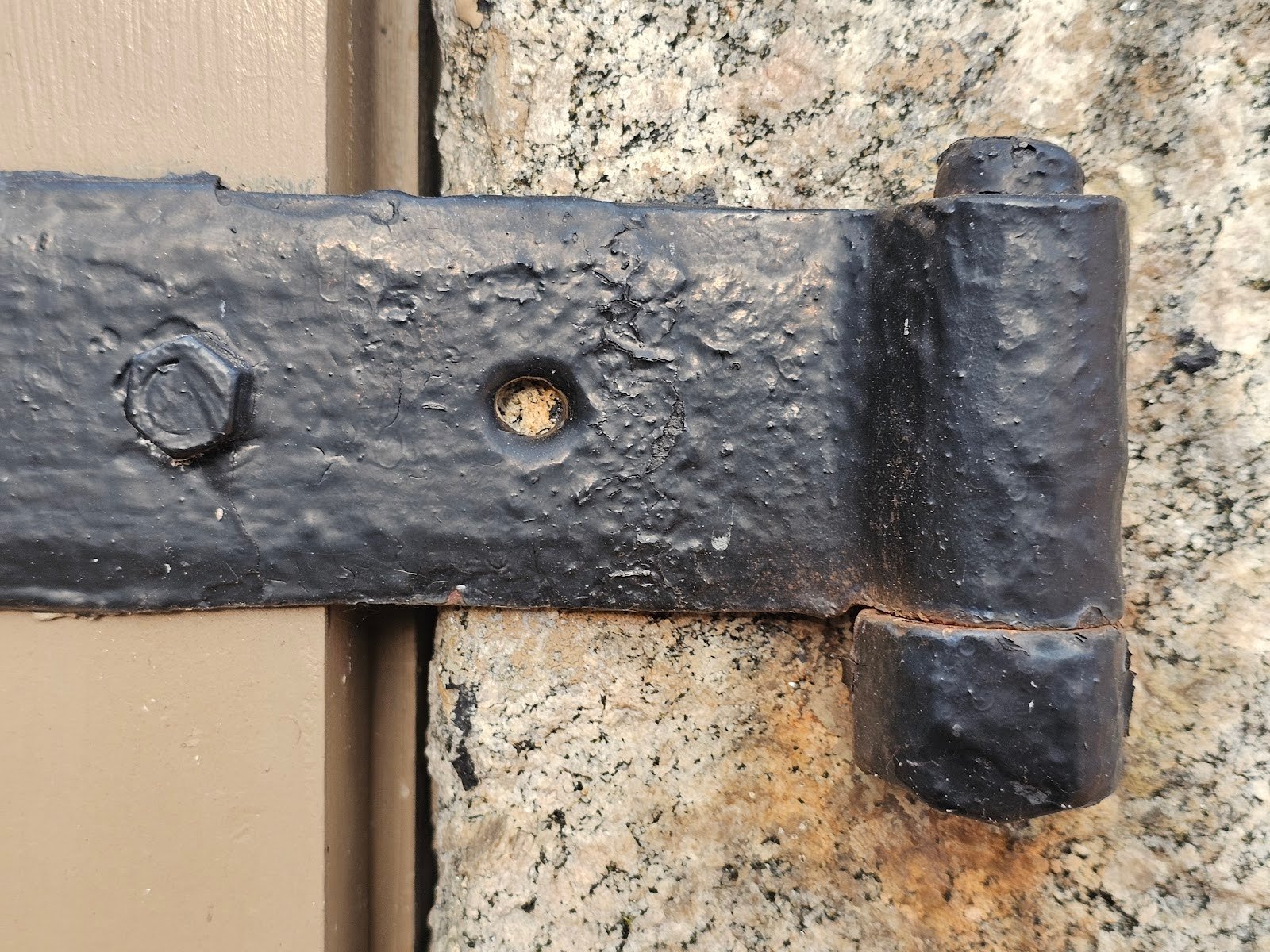Strap Hinges in Historic Masonry Structures
This past week, we looked at a historic door. That particular historic door was not actually original to the building. Although that particular door had elegant hinges, the door was installed, set, just inside of the historic masonry facade. Today we’re looking at historic doors and shutters that are in fact installed in a historic stone outer facade. Although we’ll talk a bit about the masonry, the real topic is about the hinges and hardware used to create the finished opening and door portals inside of the historic masonry.
In the picture below you can see a pair of historic strap hinges installed at each of the door leafs. There are a total of three different opening leafs. A pair is installed at the upper opening and a single door leaf is installed at the lower opening. These particular doors are more like shutters at windows but they were used for functional purposes as well. This particular building is a historic warehouse. The doors shown here may have been used for loading and or unloading.

You can see rust spots below the hinges. This indicates that the hinges were likely made from iron. Today, there are some examples of brass hinges and even stainless steel hinges. The vast majority though are made with at least a ferrous alloy.
Ferris alloys contain a high degree of iron, but they’re not the same as historic iron. They have a higher degree of strength and possibly some additional resistance to oxidation. These particular hinges, as shown below, are required to be residually or consistently maintained to have a good coat of paint applied to the exterior. As the paint deteriorates, rust will begin to occur and deteriorate the substrate. Over time this could lead to the failure of the hinges.
Strap hinges are very different than a typical type of hinges we use at modern installations of typical doors. Strap hinges have a relatively simple point of mounting on the wall. Generally, the point of typical mounting for a hinge will be at a location at the inside of the jamb of the opening. Here, the mounting location is directly on the face of the wall. The part of the hinge that mounts to the door or shutter is very different though. That part of the hinge extends very long, across the face of the door.

This particular hinge is about 30 inches in length. You can see the long portion of the arm of the hinge stretches all the way across the leaf of the door.

This particular hinge is so long that the end of the hinge almost reaches the edge of the astragal. The astragal is like a muntin in a window, but is instead installed at the edge of the door leaf. In this particular case, the astragal is mounted on one door leaf which means that there is a sequence to closing the pair of door leafs. The one without the astragal must always be closed first and open second.

Unlike a typical hinge that is screwed into the jamb or frame of the door, this particular mounting location is integral like a bolt formed into the edge of the hinge. In cases like this, in historic times, they may have actually poured molten lead into and around the area of mounting at the embedded stud.
Interestingly, an additional hole has been formed into the original hinge but intentionally unused. When installing a fastener near the edge of a masonry unit, the outward or expansive force of the fastener can cause a tensile failure at the edge of the stone. This type of tensile failure would be happening at an area of weakness in the masonry unit. Masonry units, in general, happened to normally lack significant tensile resistance. The edges therefore are particularly weak.

Our company, Dupont Tuckpointing and Masonry, specializes in masonry restoration, historic brick repointing, and tuckpointing services in the Washington D.C. area. These buildings are uniquely historic, and their preservation requires skilled masons who are technically trained in the best practices and knowledge of proper restoration techniques.
We understand the significance of maintaining the architectural integrity of these historic structures, and our team of experienced professionals is dedicated to delivering exceptional craftsmanship. Whether you require masonry restoration, tuckpointing, or brick repointing services, we are here to help.
At Dupont Tuckpointing and Masonry, we take pride in our work and strive to ensure that every project is executed with the utmost care and attention to detail. We are committed to preserving the rich heritage of Washington D.C.’s built environment for generations to come.
If you have any questions or needs regarding masonry restoration, historic brick repointing, or tuckpointing services, please do not hesitate to reach out to us. We would be delighted to assist you and provide you with the expertise and quality workmanship that your historic property deserves.You can reach us by telephone at (202) 796-7644 and you can reach us by email from the contact form on our website at https://duponttuckpointingmasonrydc.com/contact-us/.



